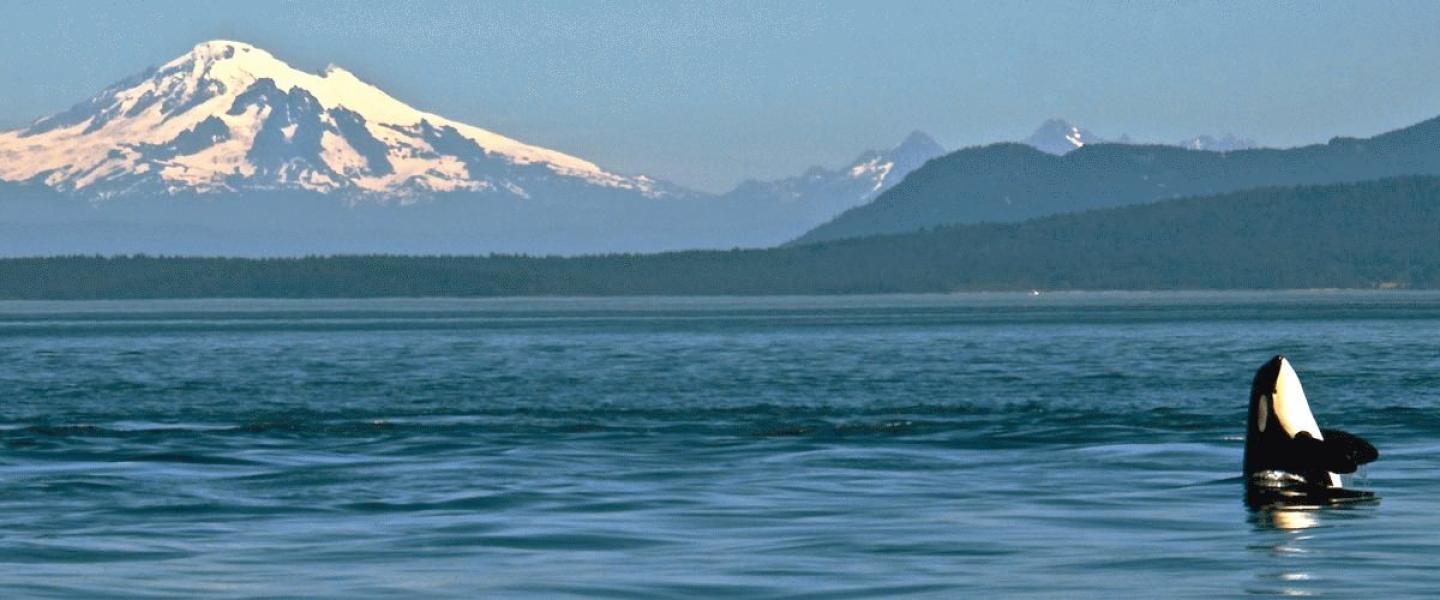
There is more to life in the islands than orcas. With every brochure and website showing photos of leaping black and white behemoths, it is easy to forget that there are other equally stunning species that live in this area. It is also easy to overlook the basic beauty of the setting for fear that you might miss that one great shot of a killer whale. For these reasons it is always rather nice that the season starts and ends so "slowly". These days spent rocking in the cradle of waves, listening to the calls of seagulls and the whistles of pigeon guillemots, can be very cathartic and just as entertaining. The mild weather encourages one to spend time on deck and the more you can look around the more that you are going to see.
Today was one of those calm, peaceful days on the water. Orcas were reported to be well North of the San Juan Islands at the Campbell River, so the area belonged to our other locals. As always, there was nothing to be disappointed about. With Capt. Craig at the helm of the M/V Sea Lion we wound our way through both the U.S. and Canadian Gulf islands looking for seals, sea lions, porpoises and eagles. At Boiling Reef the surf scoters, a type of marine duck, continue to feed in the high speed current lines in large rafts. A few Steller's sea lions are still clinging to the rocks there, seemingly reluctant to make the long trip to Alaska. Harbor seals are beginning to collect more and more thickly across any exposed rocks as the females get closer to pupping season and start looking for rookery sites. In the air, swallows of several varieties tilt and whirl with their pursuit of insects and eagles are returning to their nests and doing the necessary maintenance for a new season. Rhinoceros auklets are showing their breeding plumage, with their beak "horns" and mustaches and soon they will begin to make the long trek to Protection Island with their beaks full of fish for their chicks.
With the warm sunshine and calm water though, the day definitely belonged to the harbor porpoises. Just off the west end of Patos Island, where the historic lighthouse is, but before you get to East Point on Saturna Island in Canada, there were hundreds of harbor porpoises. Smaller than dolphins and without the telltale "beak", porpoises can be easily overlooked or mistaken for a baby dolphin. Harbor porpoises are notoriously shy, often disappearing not to be seen again once they have been spotted, but today was special. The porpoises were so busy hunting in the current lines that they paid no mind to us. Capt. Craig turned the engines off and we drifted with the sea listening to each blow and splash and these pint-sized powerhouses cavorted around us. The water was so calm that as each porpoise came up for a breath we could see the color variations on their skin and get a look at their blunt, rounded faces. This was by far the best experience the captain or I had ever had with these elusive creatures and the guests could sense the awe of the encounter.
So, from all of us at San Juan Safaris, to all of you who see the potential in any natural experience, thank you and we will...
See You In The Islands!
~Tristen, Naturalist